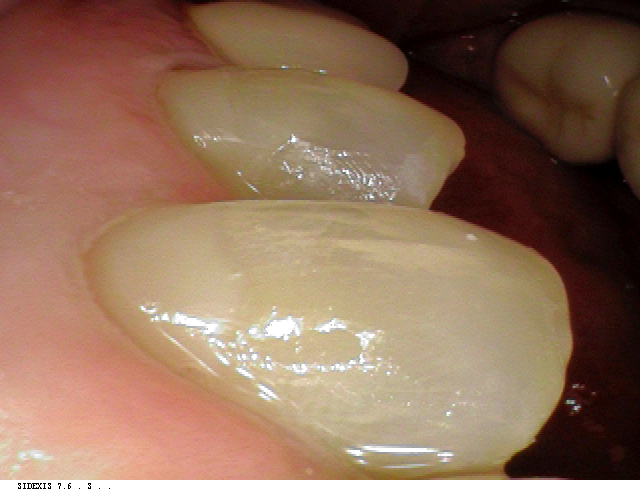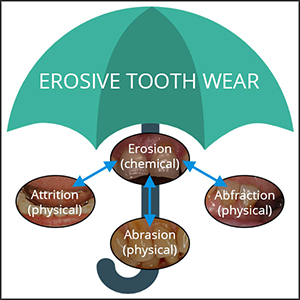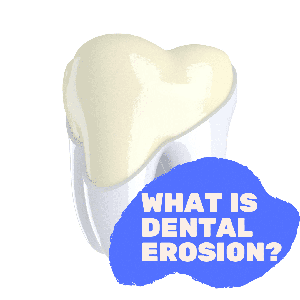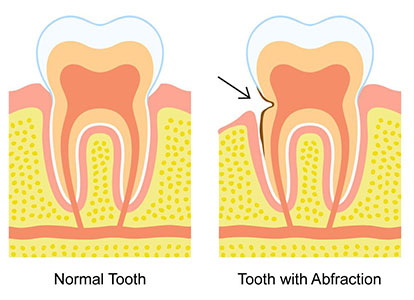
A dental erosion (abfraction) is a loss of tooth structure in the root portion of the tooth, which typically does not contain dental decay. In other words, they are non-cavity (non-carious) 'cervical' tooth lesions. They are often angular-shaped and have very straight edges.
Erosion can occur in the front or back portion of a tooth but are more prevalent on the teeth' front (buccal) surface. Patients may first become aware of these lesions by increasing tooth sensitivity. In many cases, not much tooth structure separates the eroded area from the internal tooth nerve, leading to sensitivity.
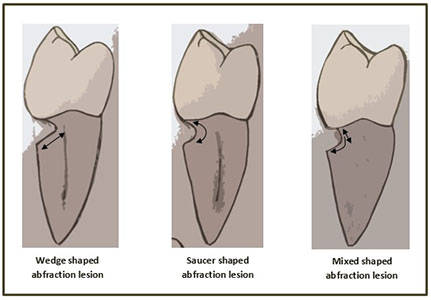
If the gum tissue (gingival tissue) recedes around a tooth, it exposes the tooth's root. The tooth root contains cementum tissue, which is much weaker than the crown portion of the tooth. When this exposed root is subject to erosion forces such as acidity from drinks abrasion from brushing, the tooth root may wear inwards, causing loss of tooth structure. There is also a high correlation between grinding or clenching forces and the presence of abfraction lesions. Most patients are surprised to hear this fact because there is no grinding on the abfraction surface. The theory behind this correlation is that the weaker or thinner abfraction area micro flexes in the presence of grinding and clenching. If patients have abfraction lesions, they can minimize further damage by brushing gently and avoiding prolonged exposure to the root surfaces to acidic food and drink such as colas.
Fortunately, there is a simple but technique-sensitive treatment for dental erosion. Dr. Hawryluk Jr. has helped thousands of patients retain their teeth using his practical and economical approach. Thorough cleansing of the erosion area is the first step of this process. Next, applying a "root conditioner" and "dental bonding agent" ensues. Finally, a layer of dental composite resin is applied. Very thin diamonds are used after the placement to shape the dental bonding.. Finally, if Dr. Hawryluk determines the cervical tooth loss is related to how the teeth interrelate, conservative bite adjustment is sometimes made.
It is always best to treat dental erosion early before too much tooth structure is lost. If you suspect you may have dental erosion and you live in the Mississauga or Toronto area, please call St. Lawrence Dentistry for an assessment.
Below are actual examples of abfractions treated by Dr. Hawryluk Jr.
Case 1: BEFORE
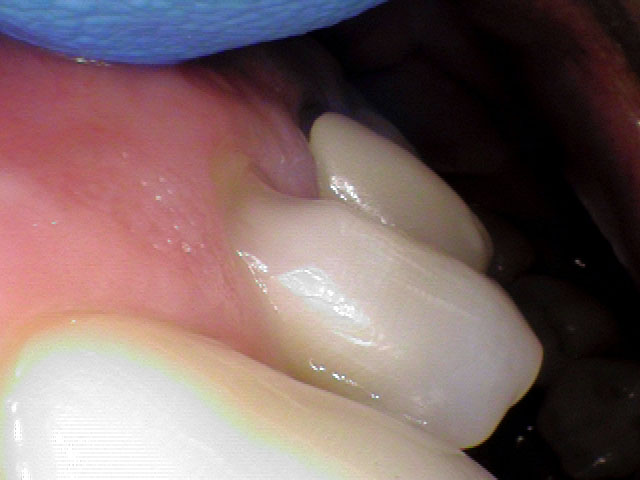
Case 1: AFTER
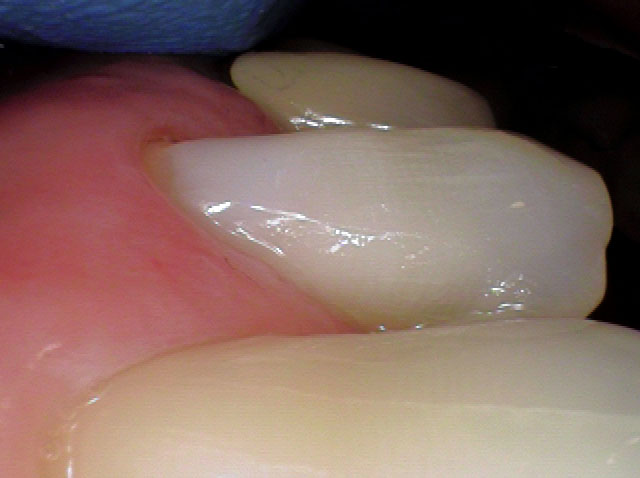
Case 2: BEFORE
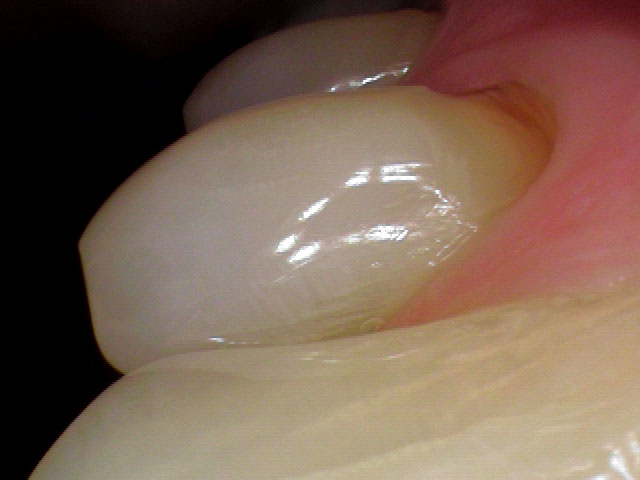
Case 2: AFTER
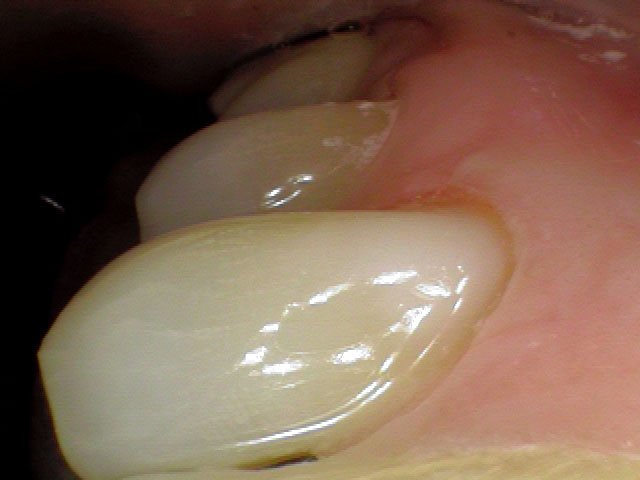
Case 3: BEFORE
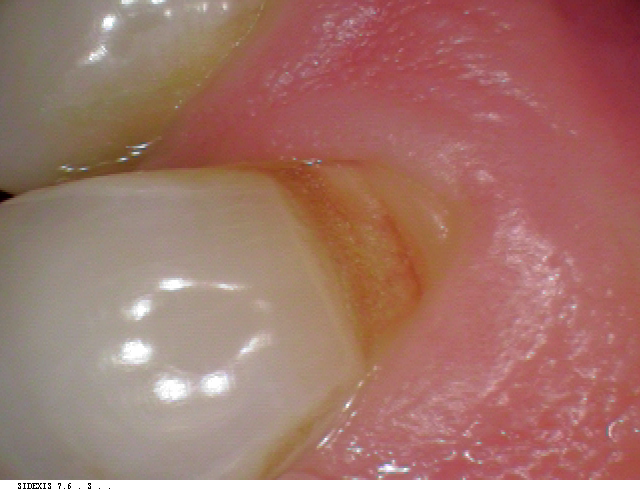
Case 3: AFTER
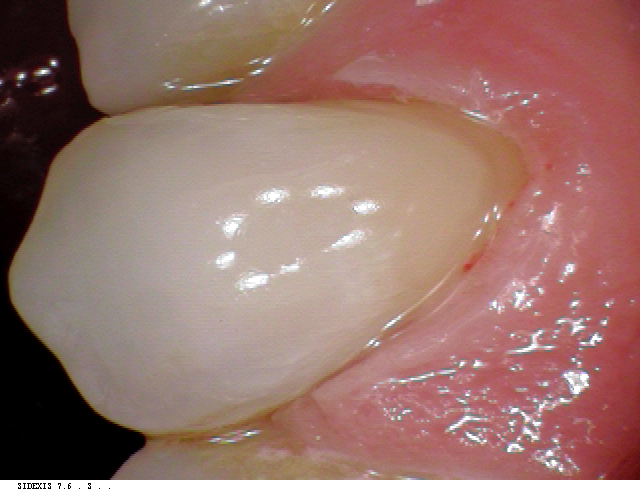
Case 4: BEFORE
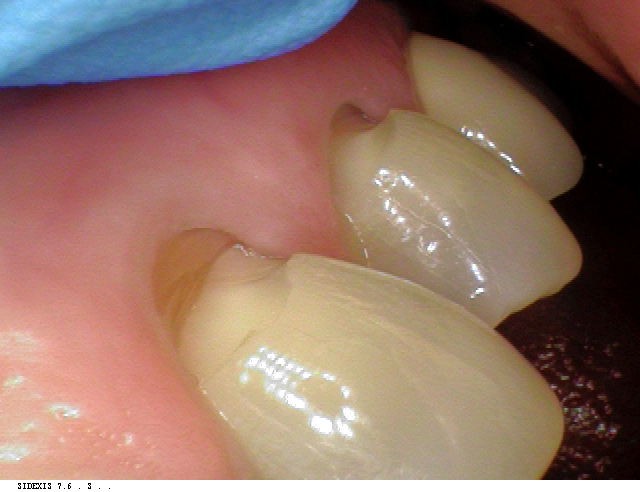
Case 4: AFTER
